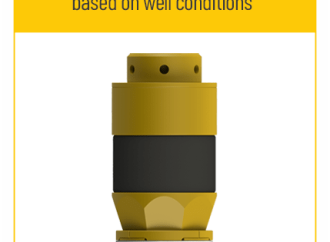The year 2020 brought about a global pandemic that shook the world, but it also highlighted the importance of our planet’s health. As we transition into 2021, environmental regulations are in the forefront of discussions and actions being taken by governments and industries alike. From renewable energy to plastic waste reduction, this year promises to
The year 2020 brought about a global pandemic that shook the world, but it also highlighted the importance of our planet’s health. As we transition into 2021, environmental regulations are in the forefront of discussions and actions being taken by governments and industries alike. From renewable energy to plastic waste reduction, this year promises to bring significant developments and impacts on our environment. Join us as we explore the latest trends in environmental regulations for 2021 and their potential impact on our planet’s future.
Overview of Environmental Regulations
1. Overview of Environmental Regulations
Environmental regulations are laws or administrative rulings that prescribe minimum safety and environmental standards for the production and use of chemicals, physical infrastructure, and other aspects of the environment. These regulations are designed to protect public health and the environment from potential risks associated with chemical production and waste management practices. The Clean Air Act of 1970, Water Quality Control Act of 1986, Comprehensive Environmental Response, Compensation, and Liability Act (CERCLA) of 1980, Federal Insecticide, Fungicide, and Rodenticide Act (FIFRA) of 1972, Toxic Substances Control Act (TSCA) of 1976, Endangered Species Act (ESA) of 1973, Marine Life Protection Act (MLPA) of 1992 are some examples of environmental regulations in effect today.
2. Trends in Environmental Regulations
Environmental regulation has undergone a dramatic transformation in recent years as governments around the world have recognized the need to protect their citizens from harmful exposures to chemicals and other toxins. This shift is attributable to several factors:
-The public has become more aware of the dangers posed by toxic substances in the environment;
-The development over the past several decades of sophisticated monitoring technologies has made it possible to detect hazardous levels of pollutants much earlier than ever before;
-The increased use and disposalof chemicals throughout society has led to increased exposuresto these materials through both human contactand ingestionof contaminated waterand food;
-And finally, heightened concern over global climate
Trends in Environmental Regulation
1. Trends in Environmental Regulation
Environmental regulations have been on the rise in recent years, as governments and businesses alike seek to address environmental concerns and protect public health. This trend is likely to continue, as the Earth continues to face mounting challenges from climate change, pollution, and other environmental threats.
Here are some key trends in environmental regulation:
-Increased regulation of air quality: Air pollution has become a major global concern, as it can cause health problems such as asthma attacks and cancer. To address this issue, many countries are implementing stricter air quality standards. For example, China recently announced plans to reduce air pollution by up to 30% by 2020.
-Increased regulation of water quality: Pollution of water supplies is also a major problem worldwide. As a result, many countries are implementing stricter water quality standards. For example, China has imposed strict limits on the amount of heavy metals that can be released into rivers and lakes.
– Increased regulation of land use: Changes in land use are also causing concern among environmentalists. For example, deforestation – the removal of trees – is causing increased emissions of greenhouse gases, which are contributing to climate change. Many countries are taking steps to curb this practice; for instance, Brazil has enacted laws that require developers to take into account the impact of their projects on forest reserves.
-Increased enforcement of regulations: In order for regulations to be effective, they must be backed by strong enforcement mechanisms.
Developments in Environmental Regulation
Environmental regulation is constantly evolving as new scientific discoveries are made and the impacts of human activity on the environment are more fully understood. Here are some recent developments in environmental regulation:
1. The EPA’s New Rule on Waters of the United States
In May 2018, the EPA released a new rule (known as the WOTUS rule) that affects how water can be used by businesses and individuals across the country. The rule allows for greater clarity in how waterways can be used, and it strengthens protections for waterways from pollution and development. Critics say that this rule will result in increased costs for business owners and landowners, while proponents argue that it will improve water quality and protect vital habitats. The rule is currently being challenged in federal court.
2. California’s New Environmental Laws
In October 2017, California became the first state in the nation to pass a law designed to reduce greenhouse gas emissions from major industrial polluters. Known as AB 32, this law requires large industrial polluters to reduce their emissions by 40% by 2030 compared to 2005 levels, and it creates a cap-and-trade program to help businesses comply with these requirements. Opponents of AB 32 argue that it will increase energy prices overall and hurt economic growth in California, while supporters contend that it is necessary to address climate change head-on. AB 32 has yet to take effect due to a legal challenge filed by oil companies challenging its validity.
3. The Paris Agreement on Climate Change
On
Impacts of Environmental Regulation on Businesses
Environmental regulations are constantly increasing in complexity and stringency, with more and more businesses feeling the impact. Recent reports indicate that the cost of compliance has increased by as much as 900% since 2006, with environmental law firms seeing a surge in business. This increase in regulation is likely to continue as governments attempt to address growing concerns over global warming and other environmental issues.
The following are some of the key impacts of environmental regulation on businesses:
1. Increased Costs: Compliance costs have increased significantly due to the increase in regulations, ranging from startup costs for new companies to modifications required for existing operations. The cost of compliance can be substantial, even for small businesses. For example, one Environmental Law Firm reported that the average cost for a small business to comply with federal environmental laws was $176,000 (source: Environmental Management & Policy). This figure doesn’t include state or local requirements, which can also be expensive.
2. Reduced Productivity: Regulations can reduce productivity by forcing companies to modify their operations or by prohibiting certain activities altogether. For example, many agricultural products must now be produced without pesticides because of regulations related to health and safety. This has led to decreased yields and increased costs associated with purchasing alternative inputs such as fertilizer. Similarly, many companies have had to stop manufacturing certain types of products due to restrictions on emissions levels or raw materials used in production.
3. Reduced Competitiveness: Regulations can make it difficult for companies to compete if they are not compliant.
Conclusion
In this article, we have discussed some of the key environmental regulations that will be in place in 2021. We have also looked at some of the trends that are likely to occur as a result of these regulations, as well as some of the impacts that they will have on businesses and individuals. By understanding what is going to happen, you can make informed decisions about how best to protect your interests.























Leave a Comment
Your email address will not be published. Required fields are marked with *